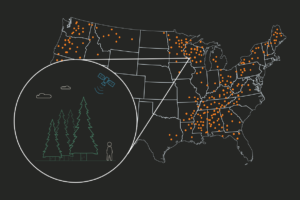We are pleased to announce the publication of the peer-reviewed paper “The Time Value of Carbon Storage” in a forthcoming issue of Forest Policy and Economics. Led by NCX CEO Zack Parisa and co-authored with Professor Brent Sohngen from Ohio State University, Professors Eric Marland and Gregg Marland from Appalachian State University, and Dr. Jen Jenkins, this paper outlines a framework for comparing the value of short term carbon storage, such as that produced in the NCX program, with carbon stored indefinitely. By providing a framework for comparing projects of different durations, this study is critical for unlocking the full potential of Nature Based Solutions (NBS) like forests, farms, rangeland, and mangroves to address the impacts of climate change. We’re thrilled to be working with a distinguished group of collaborators who have made significant contributions in the development of voluntary carbon markets. Collectively, the authors have contributed to multiple IPCC reports and many peer-reviewed publications, as well helping found multiple corporate sustainability programs.
Why is this significant? Because being able to quantify the impact of carbon storage for any duration means we can recognize and fairly credit the contribution of all dynamic natural systems, which themselves occur at various time scales. That unlocks participation for thousands of small landowners and communities who are not able to sign multigenerational carbon contracts and turns millions of acres of additional forest into climate action. This maximizes the scale of climate impact we can make in this critical decade. By providing a scientifically grounded equivalence between shorter and longer-term carbon storage, this study helps solidify the role of NBS in the voluntary carbon market and give confidence to buyers that purchase them to achieve their sustainability goals.
So how does it work? By quantifying carbon storage in terms of its economic value today, we can incentivize action right now which has both near and longer term benefits, such as slowing and reducing the peak of global warming. This is accomplished by applying a time preference to capture the “time value” of immediate action to confront the impacts of climate change. The paper presents a formula for calculating the number of tons that must be stored over time in order to have equivalent economic value as one ton of CO2 stored out of the atmosphere forever. Using a time preference of 3%, a value consistent with federal guidance on how to estimate the Social Cost of Carbon, this formula shows that 33.8 tons held out of the atmosphere for one-year has the same the value of a permanent ton.
We’re excited to be contributing to the critical scientific discussion on how to value and fairly compare different types of carbon projects.
Read the complete “The Time Value of Carbon Storage” peer-reviewed paper.



